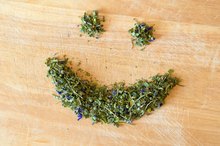Burns Anxiety Checklist
The Burns Anxiety Inventory (BAI) is an assessment tool used to measure anxiety. Developed by psychiatrist David Burns, the inventory, or checklist, can be self-administered or administered by a clinician. It can help people to monitor their own anxiety over time, and to become more aware of anxious symptoms. It also aids clinicians in diagnosing anxiety disorders.
If you are experiencing serious medical symptoms, seek emergency treatment immediately.
Significance
Many psychological tools assess anxiety, such as:
- The Multidimensional Anxiety Scale for Children
- the GAD-7 Instrument of Spitzer et al for Measuring Generalized Anxiety Disorder [3](# 'inline-reference::"The Efficacy of Psychodynamic Psychotherapy," February–March 2010: American Psychologist
- Jonathan Shedler
- University of Colorado Denver School of Medicine.')
The Burns Anxiety Checklist is one of the most common and most accessible, and it can be self-administered. By giving a numeric rating to overall anxious symptoms, a person can evaluate his anxiety every day, to see how his anxiety fluctuates and to evaluate the progress of treatment.
The Inventory
What Are the Benefits of Lexapro?
Learn More
The inventory is a checklist of thirty-three symptoms related to anxiety 1. They are broken down into three categories: anxious feelings, anxious thoughts, and physical symptoms. A person taking the assessment ranks each item on a scale from zero, "not at all," to three, "a lot." Anxious feelings items include "feeling that things around you are strange, unreal, or foggy" and "apprehension or a sense of impending doom." Thoughts include such items as "difficulty concentrating" and "fears of being alone, isolated, or abandoned." Physical symptoms lists sixteen items, including "pain, pressure, or tightness in the chest" and "restlessness or jumpiness."
- The inventory is a checklist of thirty-three symptoms related to anxiety 1.
- Thoughts include such items as "difficulty concentrating" and "fears of being alone, isolated, or abandoned."
Scoring
Burns claims that a person can complete and score the entire inventory in under two minutes. To evaluate the level of anxiety indicated on the checklist, each item is added up numerically.
Using the Inventory
Meclizine for Anxiety Symptoms
Learn More
Burns suggests taking the BAI once a week or more 2. He additionally advises noting if particularly anxious or particularly calm at the time of taking the inventory, to begin to chart the range of anxiety. Sharing the scores with one's therapist can aid in diagnosis and treatment. ').
Treatment
Depending on the score of a series of Burns Anxiety Inventories, treatment may be advisable. Psychotherapists of all modalities work with anxiety 1. Medication helps some people to manage anxiety and panic 1. A psychiatrist can assess which drug would best treat a particular set of symptoms and lifestyle.
Related Articles
References
- Neurotransmitter.net: Psychiatric Rating Scales for Anxiety
- The Feeling Good Handbook, David Burns M.D., Plume, 1999.
- "The Efficacy of Psychodynamic Psychotherapy," February–March 2010: American Psychologist, Jonathan Shedler, University of Colorado Denver School of Medicine.
- National Institute of Mental Health. Anxiety Disorders. Updated July 2018.
- American Psychiatric Association. Diagnostic and statistical manual of mental disorders (Fifth edition). Washington, D.C.: American Psychiatric Association; 2013.
- Gregory KD, Chelmow D, Nelson HD, et al. Screening for anxiety in adolescent and adult women: A recommendation from the Women's Preventive Services Initiative. Ann Intern Med. 2020. doi:10.7326/M20-0580
- Kaplan MD, Harold I, Sadock MD, Benjamin J. Synopsis of Psychiatry, Eleventh Edition. 2014;Baltimore: Williams & Wilkins.
Writer Bio
Hazel Thornstein has been writing and editing since 2003. She writes copy for websites such as LIVESTRONG.COM and marketing materials. Thornstein is a psychotherapist, and her writing focuses on psychology and relationship issues. She holds a Bachelor of Arts in mass communications and creative writing from the University of California-Berkeley and a Master of Arts in psychology.









